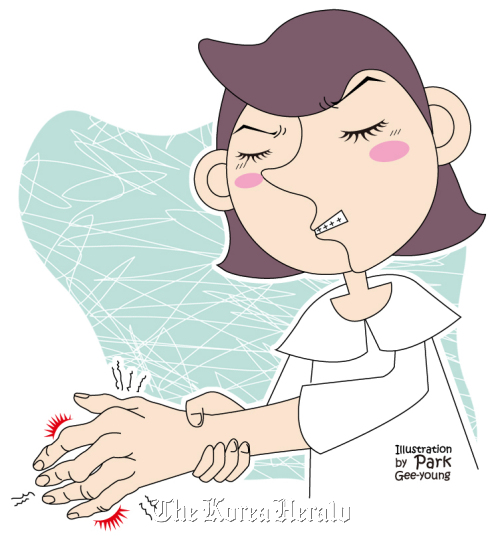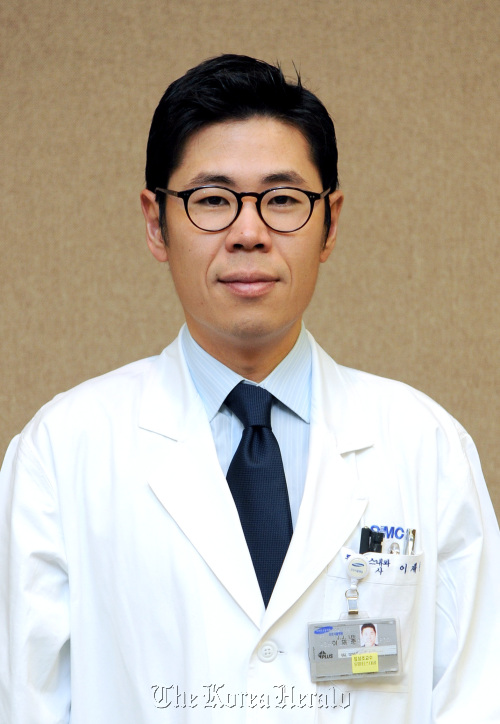Rheumatoid arthritis, or RA, is an autoimmune disease that causes inflammation of the joints. In rheumatoid arthritis, the immune system ― which is designed to protect our health by attacking foreign cells such as viruses and bacteria ― instead attacks the body’s own tissues, specifically the joints. As a result, fluid buildup causes pain and inflammation.
Rheumatoid arthritis is a chronic disease, meaning it cannot be cured. Most people with RA experience intermittent bouts of intense disease activity, called flares. In some people the disease is continuously active and gets worse over time. Others enjoy long periods of remission ― no disease activity or symptoms at all. Evidence shows that early diagnosis and aggressive treatment to put the disease into remission is the best means of avoiding joint destruction, organ damage and disability.

The symptoms and course of rheumatoid arthritis vary from person to person and can change on a daily basis. Your joints may feel warm to the touch and you might notice stiffness, as well as swelling and pain in the areas around the affected joints. Rheumatoid arthritis is symmetrical, meaning if a joint on one side of the body is affected, the corresponding joint on the other side of the body is also involved. Because the inflammation is systemic, you’re likely to feel fatigued and you may lose your appetite and run a low-grade fever.
Rheumatoid arthritis may affect many different joints and cause damage to cartilage, tendons and ligaments ― it can even wear away the ends of your bones. One common outcome is joint deformity and disability. Over time, RA can also affect numerous organs and internal systems.
Who gets rheumatoid arthritis?
Almost 1 percent of the adult population is estimated to have RA. There are nearly three times as many women as men with the disease. In women, rheumatoid arthritis most commonly begins between the ages of 30 and 60. It often occurs later in life for men. However, even older teens and people in their 20s can get RA. As many as 300,000 children are diagnosed with a distinct but related form of inflammatory arthritis called juvenile arthritis.
The cause of rheumatoid arthritis is still unknown. Most scientists agree that a combination of genetic and environmental factors is responsible. Researchers have identified genetic markers that cause a tenfold greater probability of developing rheumatoid arthritis. Not all people with these genes develop rheumatoid arthritis and not all people with the disease have these genes.
Infectious agents, such as bacteria or viruses, may trigger the disease in someone with a genetic propensity for it. Other suspects include female hormones (70 percent of people with RA are women) and the body’s response to stressful events such as physical or emotional trauma. Smoking not only boosts the risk of developing RA among people with a specific gene, it can also increase the disease’s severity and reduce the effectiveness of treatment.
Although there is no cure for RA, highly effective treatments do exist. Once you have a diagnosis, you should begin treatment right away to slow disease progression and lower chances for joint damage. Engaging in moderate physical activity on a regular basis helps decrease fatigue, strengthen muscles and bones, increase flexibility and stamina, and improves your general sense of well-being.
Many clinical studies have found that there’s an early window of opportunity to treat rheumatoid arthritis before the onset of irreparable joint damage. Studies show that taking action quickly may even put the disease into remission.
Rheumatoid arthritis is a chronic disease, meaning it cannot be cured. Most people with RA experience intermittent bouts of intense disease activity, called flares. In some people the disease is continuously active and gets worse over time. Others enjoy long periods of remission ― no disease activity or symptoms at all. Evidence shows that early diagnosis and aggressive treatment to put the disease into remission is the best means of avoiding joint destruction, organ damage and disability.

The symptoms and course of rheumatoid arthritis vary from person to person and can change on a daily basis. Your joints may feel warm to the touch and you might notice stiffness, as well as swelling and pain in the areas around the affected joints. Rheumatoid arthritis is symmetrical, meaning if a joint on one side of the body is affected, the corresponding joint on the other side of the body is also involved. Because the inflammation is systemic, you’re likely to feel fatigued and you may lose your appetite and run a low-grade fever.
Rheumatoid arthritis may affect many different joints and cause damage to cartilage, tendons and ligaments ― it can even wear away the ends of your bones. One common outcome is joint deformity and disability. Over time, RA can also affect numerous organs and internal systems.
Who gets rheumatoid arthritis?
Almost 1 percent of the adult population is estimated to have RA. There are nearly three times as many women as men with the disease. In women, rheumatoid arthritis most commonly begins between the ages of 30 and 60. It often occurs later in life for men. However, even older teens and people in their 20s can get RA. As many as 300,000 children are diagnosed with a distinct but related form of inflammatory arthritis called juvenile arthritis.
The cause of rheumatoid arthritis is still unknown. Most scientists agree that a combination of genetic and environmental factors is responsible. Researchers have identified genetic markers that cause a tenfold greater probability of developing rheumatoid arthritis. Not all people with these genes develop rheumatoid arthritis and not all people with the disease have these genes.
Infectious agents, such as bacteria or viruses, may trigger the disease in someone with a genetic propensity for it. Other suspects include female hormones (70 percent of people with RA are women) and the body’s response to stressful events such as physical or emotional trauma. Smoking not only boosts the risk of developing RA among people with a specific gene, it can also increase the disease’s severity and reduce the effectiveness of treatment.
Although there is no cure for RA, highly effective treatments do exist. Once you have a diagnosis, you should begin treatment right away to slow disease progression and lower chances for joint damage. Engaging in moderate physical activity on a regular basis helps decrease fatigue, strengthen muscles and bones, increase flexibility and stamina, and improves your general sense of well-being.
Many clinical studies have found that there’s an early window of opportunity to treat rheumatoid arthritis before the onset of irreparable joint damage. Studies show that taking action quickly may even put the disease into remission.

By Lee Jae-joon
The author is a clinical assistant professor at Samsung medical Center’s Division of Rheumatology. ― Ed.








![[Kim Seong-kon] Democracy and the future of South Korea](http://res.heraldm.com/phpwas/restmb_idxmake.php?idx=644&simg=/content/image/2024/04/16/20240416050802_0.jpg&u=)







![[KH Explains] Hyundai's full hybrid edge to pay off amid slow transition to pure EVs](http://res.heraldm.com/phpwas/restmb_idxmake.php?idx=652&simg=/content/image/2024/04/18/20240418050645_0.jpg&u=20240418181020)

![[Today’s K-pop] Zico drops snippet of collaboration with Jennie](http://res.heraldm.com/phpwas/restmb_idxmake.php?idx=642&simg=/content/image/2024/04/18/20240418050702_0.jpg&u=)